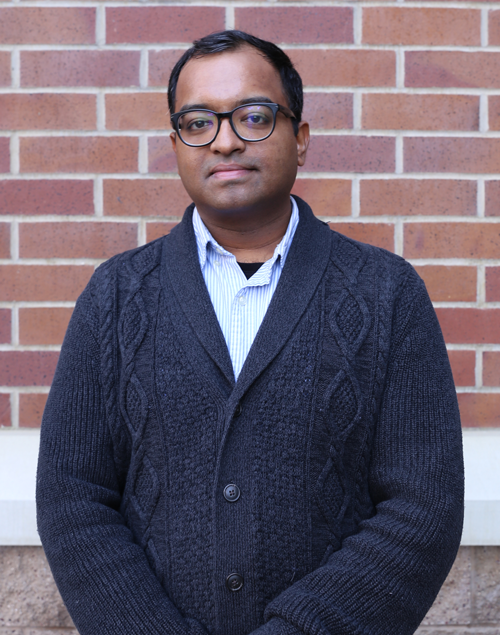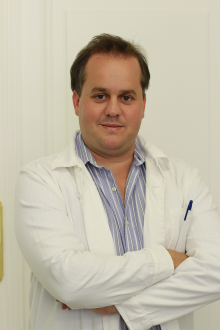Double Takes: Climate Challenges
Double Takes promotes interdisciplinary research by featuring two scientists with a common general goal, but very different approaches. This seminar will feature one ISEB faculty member and one outside faculty guest at approximately the same career stage.

Mapping, Modeling, and Mitigating Wildland Fire Risk: A Micrometeorological Perspective
Tirtha Banerjee
assistant professor
civil and environmental engineering
UCI Samueli School
Abstract: Fire suppression activities in the past few decades in North America has led to higher fuel accumulations, which coupled with shifting hydroclimatic patterns and proliferation of WUI areas, has led to an increase in frequency and severity of wildland fires. Prescribed fires and fuel treatments such as mechanical thinning are deemed to be effective tools to manage fuel loads and establish a higher degree of control over landscape management and restoration against catastrophic megafires. However, assessing the effectiveness of fuel treatments is rendered complicated due to several factors such as wind, fuel moisture and fire-atmospheric interactions at the fine scales. The present work explores these issues by using physics-based simulations and data analysis, while varying the degrees of fuel treatments and fuel moisture, as observed during different stages of fuel management. The role of fine scale micrometeorological features on wildland fire dynamics will also be discussed.
Bio: Tirtha Banerjee is an assistant professor at the Department of Civil and Environmental Engineering, UC Irvine. He received his bacchelor's degree in civil engineering from Jadavpur University (Calcutta, India) in 2011 and doctorate in environmental science from Duke University (Durham, NC, USA) in 2015. After conducting postdoctoral research at Karlsruhe Institute of Technology in Germany and Los Alamos National Lab (NM, USA) as an atmospheric scientist, he joined UC Irvine in fall 2019. Research in his Boundary Layers and Turbulence Lab studies wildfires, environmental flows and land atmosphere interaction using a range of theoretical, numerical and experimental techniques. He leads the NSF-funded international consortium on wildfires, called iFireNet, and the UCOP-funded SPARx project aimed at transforming prescribed fire practices for California. He was recently awarded the NSF CAREER Award to conduct research on the role of turbulent fluid dynamics in wildland fire behavior.

Electrolyzer Development and Process Optimization: Paving the Road for Industrial Carbon-dioxide Electroreduction
Csaba Janáky
assistant professor
physical chemistry and materials science
University of Szeged, Hungary
Abstract: Electrochemical reduction of CO2 is a promising method for converting a greenhouse gas into value-added products, utilizing renewable energy. Novel catalysts, electrode assemblies, and cell configurations are all necessary to achieve economically appealing performance. In this talk, I am going to present a zero gap electrolyzer cell, which converts gas phase CO2 to products without the need for any liquid catholyte. This is the first report of a CO2 electrolyzer cell, where multiple cells are connected into a stack, thus scaling up the electrolysis process. I will show how proper cell components and operational conditions result in unprecedentedly high partial current densities in zero-gap cells (jCO > 1.0 A cm−2), while maintaining high conversion (20-45%), selectivity (up to 90%) and low cell voltage (2.6-3.4 V).
In the second part of my talk, I will show that while precipitate formation in the cathode gas diffusion electrode is detrimental for the long-term stability, the presence of alkali metal cations at the cathode improves performance. To overcome this contradiction, we develop an operando activation and regeneration process, where the cathode of a zero-gap electrolyzer cell is periodically infused with alkali cation-containing solutions. This enables deionized water-fed electrolyzers to operate at a CO2 reduction rate matching that of those using alkaline electrolytes (CO partial current density of 420 ± 50 mA cm−2 for over 200 hours).
Finally, I will I will discuss the role of anode catalysts in CO2R cells. The urge to substitute Ir is driven by its high- and steeply rising market price as well as its limited stability in alkaline media. Although Ni is a ~ten thousand times cheaper, active, and stable oxygen evolution reaction (OER) catalyst in alkaline media, I will demonstrate that there are factors, which hinder its application in CO2 electrolysis. As an outlook, I will show the key attributes what an anode catalyst needs to possess, to be applied in CO2 electrolyzers.
References:
- C. Janáky et. al.: Multilayer Electrolyzer Stack Converts Carbon Dioxide to Gas Products at High Pressure with High Efficiency, ACS Energy Letters 4 (2019) 1770-1777
- C. Janáky et. al.: High carbonate ion conductance of PiperION membrane allows industrial current density and conversion in zero-gap carbon dioxide electrolyzer cell Energy & Environ. Science, 13 (2020) 4098-4105
- C. Janáky et. al. : Operando cathode activation with alkali metal cations allows high current density operation of water-fed zero-gap carbon dioxide electrolyzers, Nature Energy, 6, (2021) 439–448
- C. Janáky et. al.: Coupling electrochemical CO2 conversion with value-added anode processes: an emerging paradigm, Current Opinion in Electrochemistry, 25 (2021) 100621
- C. Janáky et. al.: Local Chemical Environment Governs Anode Processes in CO2 Electrolyzers ACS Energy Letters, 6 (2021) 3801-3808
- C. Janáky et. al.: Anode Catalysts in CO2 Electrolysis: Challenges and Untapped Opportunities ACS Catalysis, 2022, 12, 1037–1051
Share
Upcoming Events
-
MSE 298 Seminar: Understanding the Impact of Grain Boundary Inclination on Grain Growth Using Modeling and Simulation and Experiments
-
CBE 298 Seminar: Engineering Electron Flow - Molecular Electrochemistry for Biosynthesis, Sensing and Energy Storage
-
MSE 298 Seminar: Accelerated Discovery of the Processing Genome
-
EECS Seminar: Mixed Conductors for Bioelectronics
-
CBE 298 Seminar: The Intriguing Role of Alkali Cations at the Electrified Interface in Electrocatalysis
